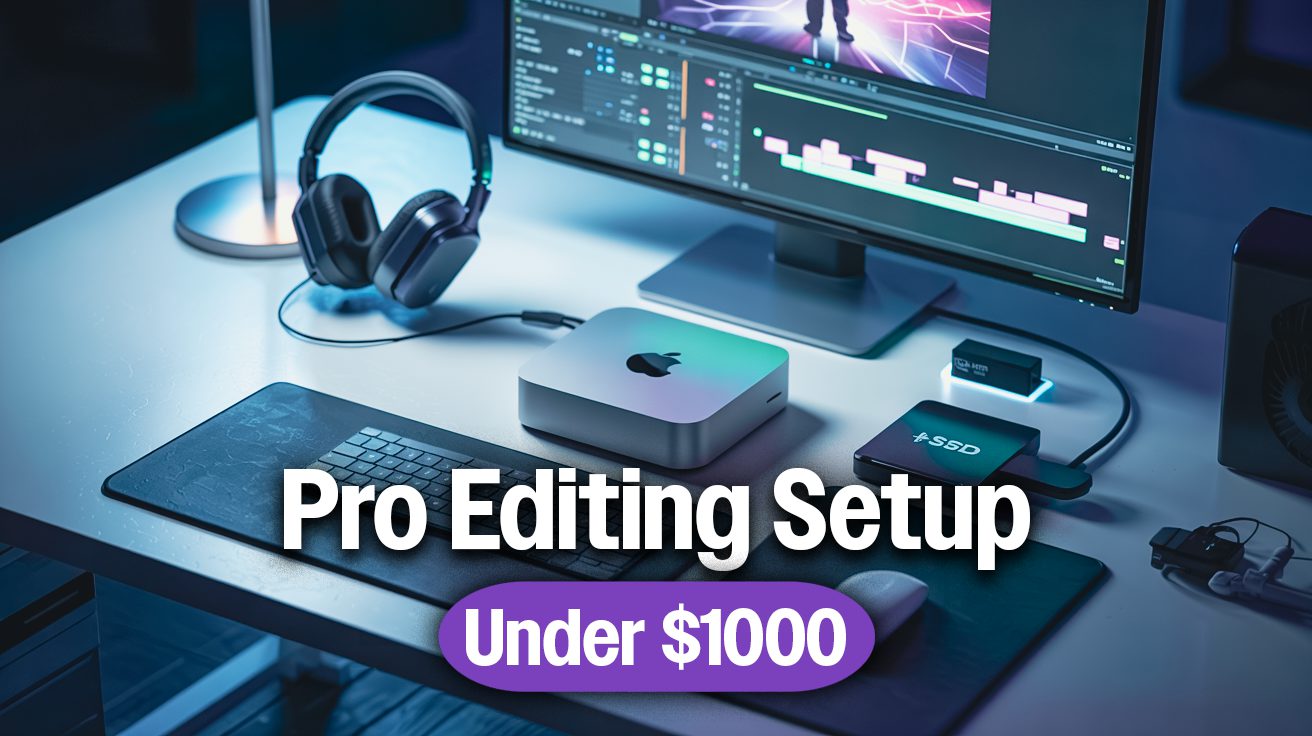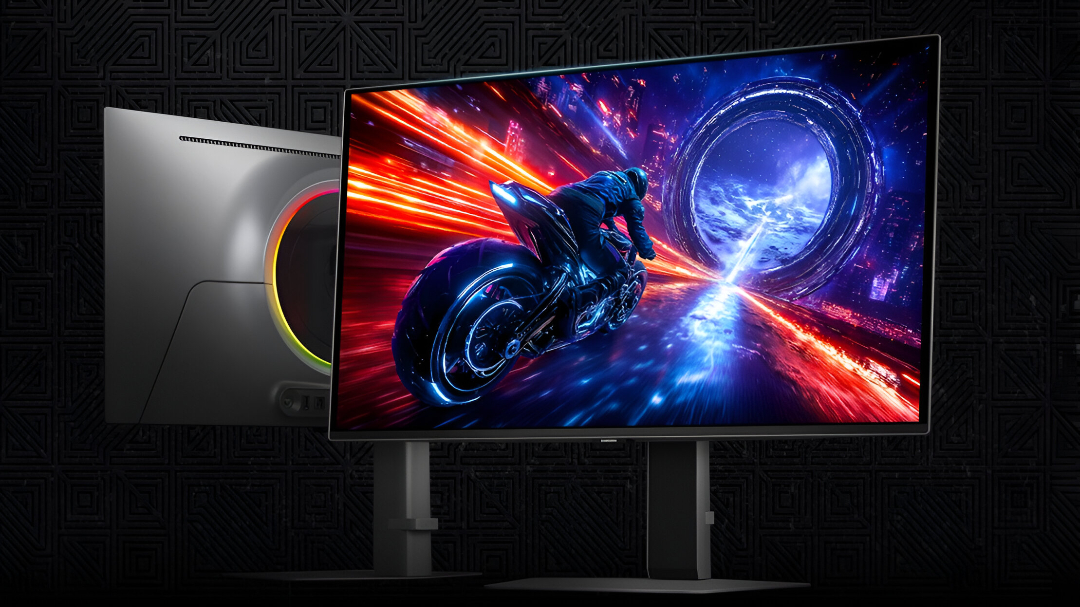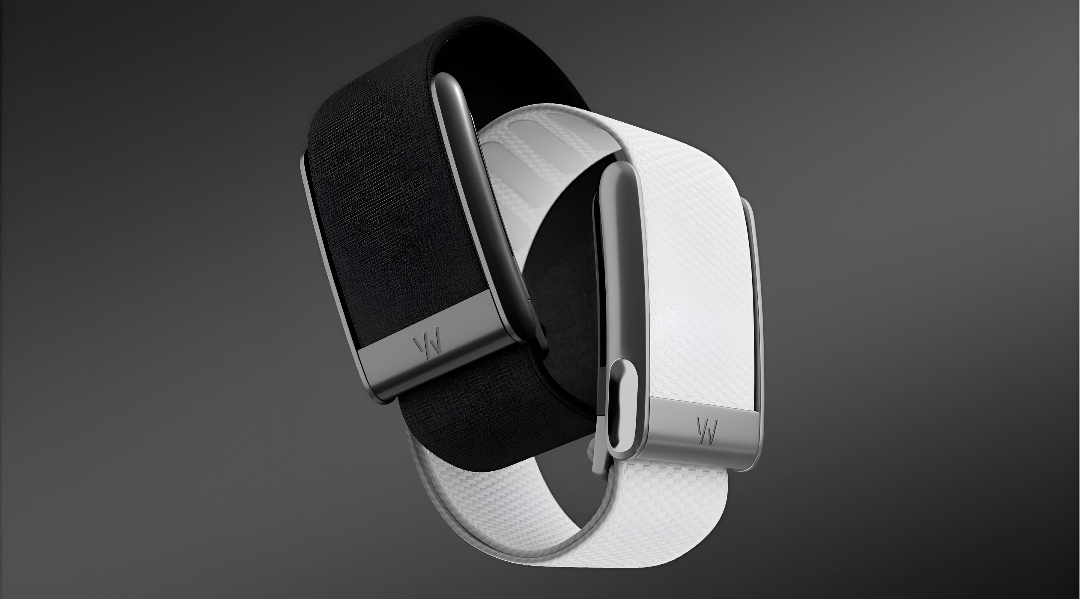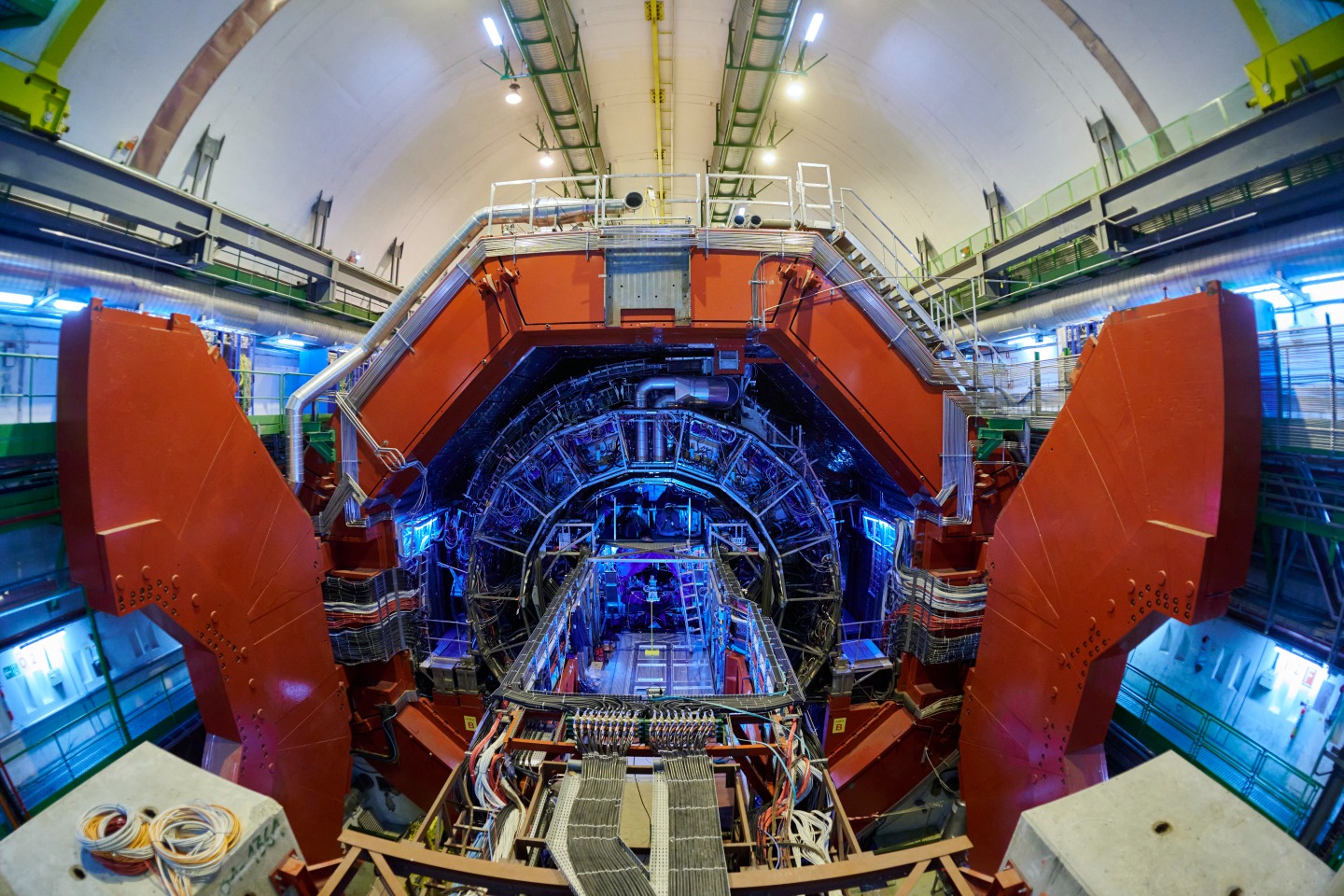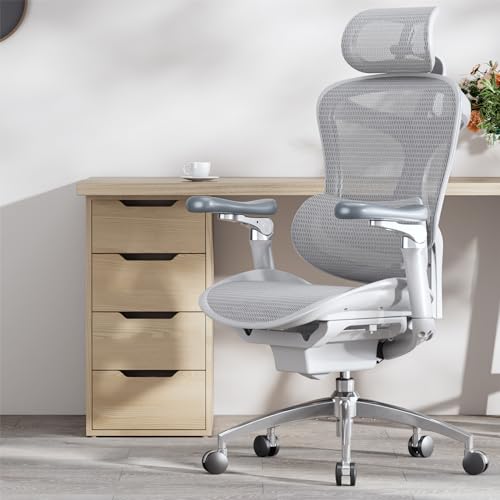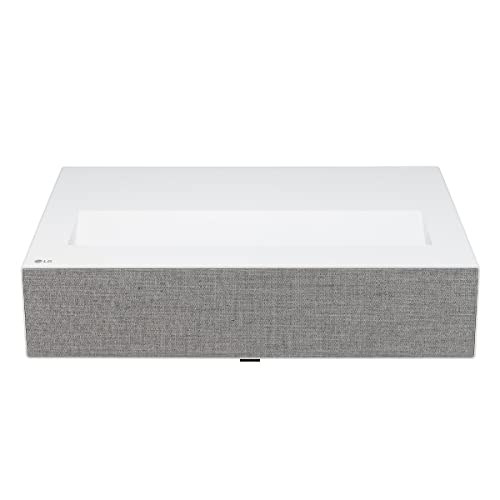Remember when creating slick videos required remortgaging your house? Those days are gone. Today’s budget gear delivers performance that would’ve made pros weep with joy just a few years ago. The editing landscape has democratized, letting creators with modest budgets produce content that stands shoulder-to-shoulder with big-budget productions.
The secret lies in knowing which affordable tools actually deliver and which ones just talk a big game. After testing dozens of options across price points, we’ve assembled a collection of gear that offers that sweet spot of performance and value. Each recommendation strikes the balance between “won’t break the bank” and “won’t break your spirit” with disappointing performance. Let’s cut to the good stuff.
This content may contain affiliate links. If you wish to support us and use these links to buy something, we may earn a commission.
16. Mac Mini M4 (2024)
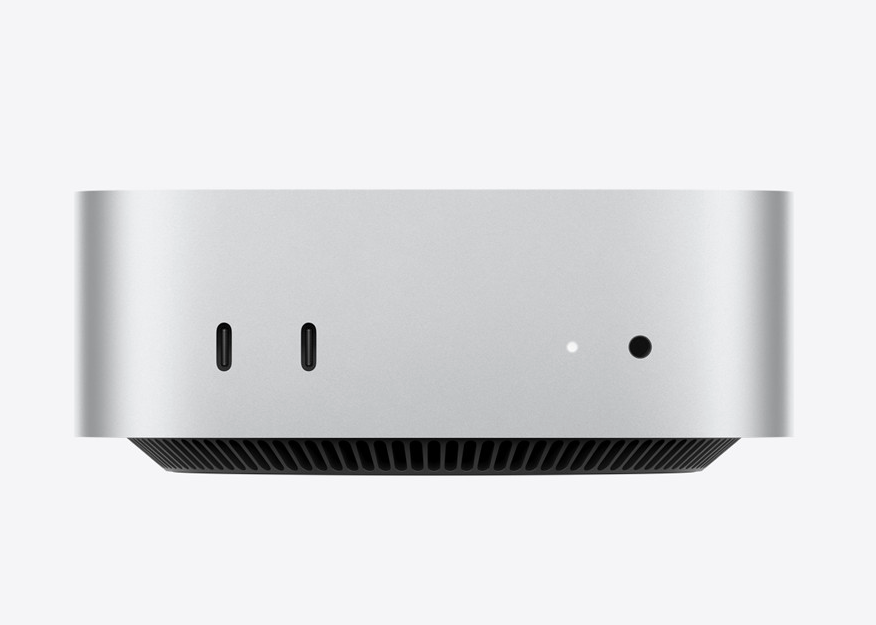
The Mac Mini M4 is like finding a supercar engine in a compact hatchback – it packs serious horsepower in a tiny frame. Starting at $599, this unassuming box delivers performance that would have cost three times as much just a generation ago. With 8GB of RAM, a 256GB SSD, and that blazing M4 chip, it handles 4K timelines with the cool confidence of much pricier machines.
Connection options abound with five USB-C ports, HDMI, Ethernet, and a headphone jack giving you plenty of room to grow. For best results, keep the internal SSD for system files and applications while connecting an external drive for your media. This setup prevents the dreaded storage bottleneck that plagues many editors when deadlines loom. The Mac Mini isn’t just an entry-level genius gadget for your home studio – it’s a legitimately powerful editing station that happens to be affordable.
15. Dell S2725HS 27-inch Monitor

Editing video on a tiny laptop screen feels like trying to paint a mural through a keyhole – technically possible but needlessly frustrating. The Dell S2725HS solves this spatial problem with 27 inches of screen real estate at a price that won’t make you wince. Its standout feature isn’t listed on the spec sheet: a 100Hz refresh rate that makes timeline scrubbing and playback noticeably smoother than standard 60Hz displays.
The anti-glare coating prevents the annoying mirror effect during late-night editing sessions, while the 1080p resolution handles most projects adequately. Color accuracy is surprisingly good for the price range, though serious color grading still benefits from calibration. Position it at eye level and slightly tilted upward to avoid the neck strain that comes from marathon editing sessions. Your future self will thank you when deadlines require those inevitable all-nighters.
14. Amazon Basics Wireless Keyboard and Mouse
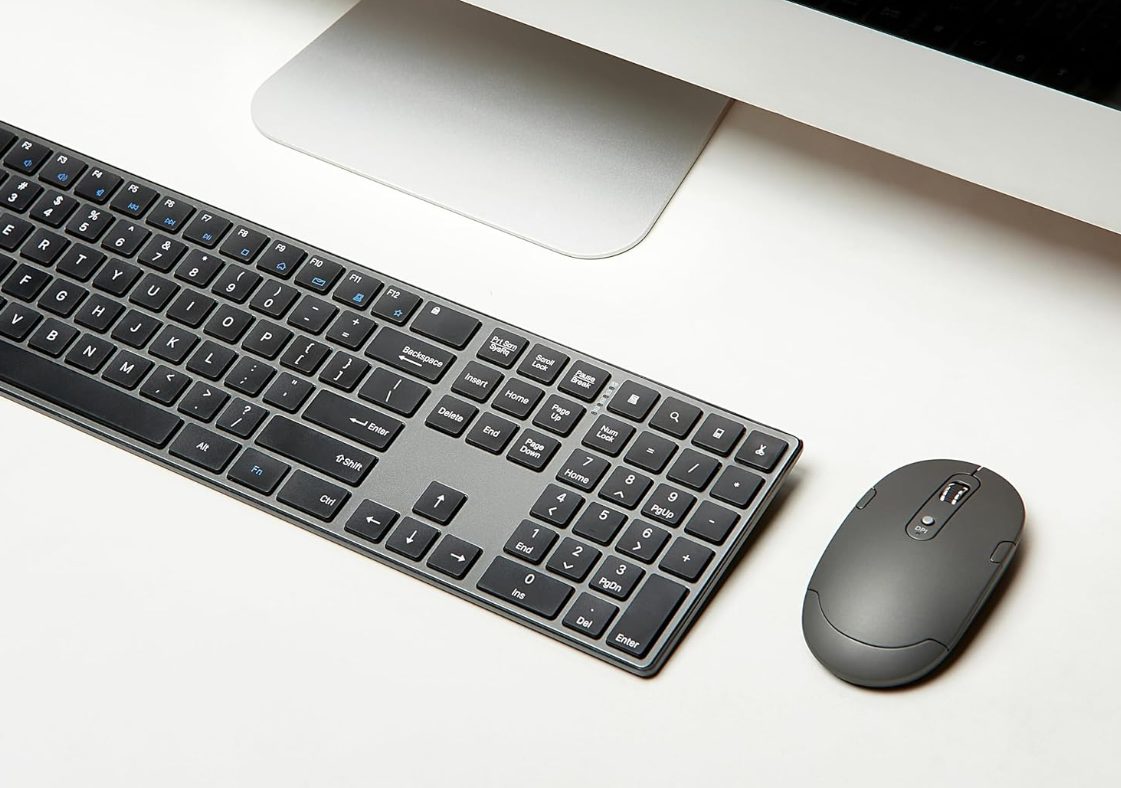
Not every piece of tech needs to reinvent the wheel or empty your wallet. The Amazon Basics Wireless Keyboard and Mouse combo proves this point beautifully at around $30. This no-frills duo handles the essential input tasks without unnecessary gimmicks or painful compromises.
The full-size keyboard includes a number pad that seasoned editors will appreciate for numeric timecode inputs and quick keyboard shortcuts. While not festooned with programmable macro keys or RGB lighting, this combo delivers reliable performance where it matters.
Pro tip: learn the keyboard shortcuts for your editing software – most editing speed comes from your fingers knowing where to go, not from fancy peripherals. The essential keyboard/mouse combo serves as a reminder that sometimes the basics done well outperform flashy alternatives.
13. Audio Technica ATH-M20x Headphones
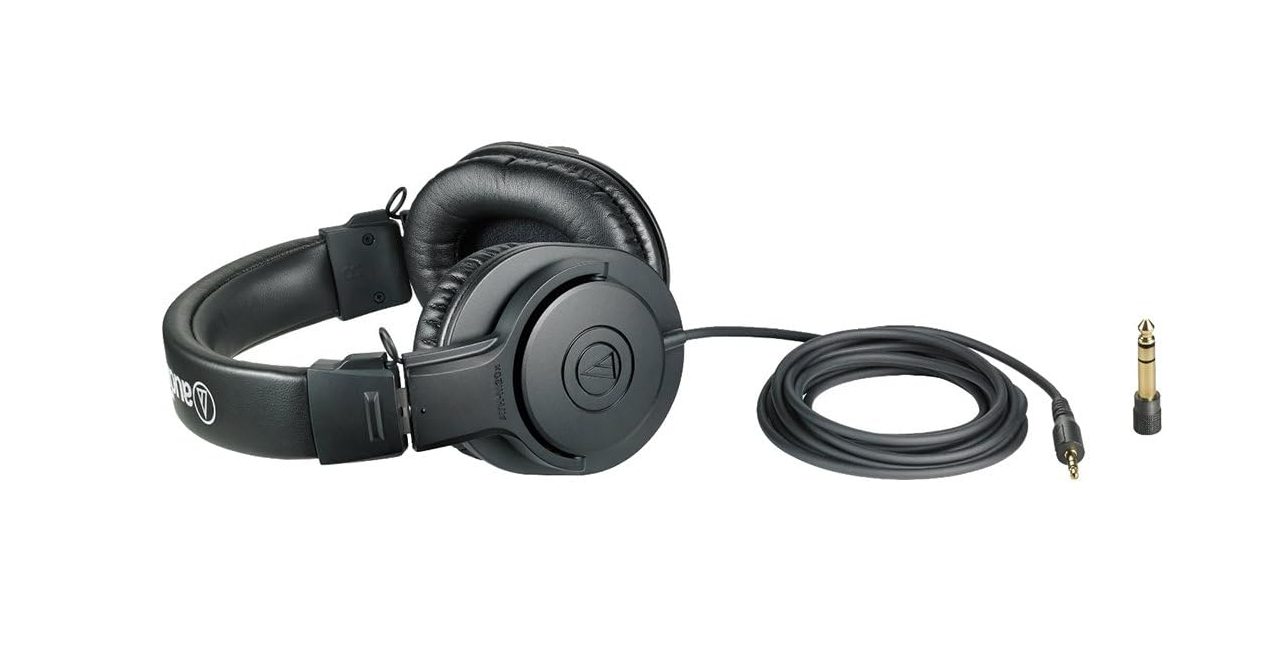
Audio issues can sink an otherwise perfect video faster than you can say “fix it in post.” The Audio Technica ATH-M20x headphones serve as your early warning system, revealing audio problems before they reach your audience. At around $49, these over-ear monitors deliver accuracy that belies their modest price tag.
The closed-back design helps isolate your ears from environmental noise, while the balanced sound signature reveals everything from subtle background hums to dialogue clarity issues. The generous 9-foot cable gives you freedom to move around your workspace without yanking your computer off the desk.
These headphones won’t win any fashion contests, but their comfortable fit makes long editing sessions bearable. They represent the perfect balance of professional utility and budget consciousness – like having a reliable audio engineer whispering in your ears for the price of a nice dinner.
12. Presonus Eris E3.5 Studio Monitors
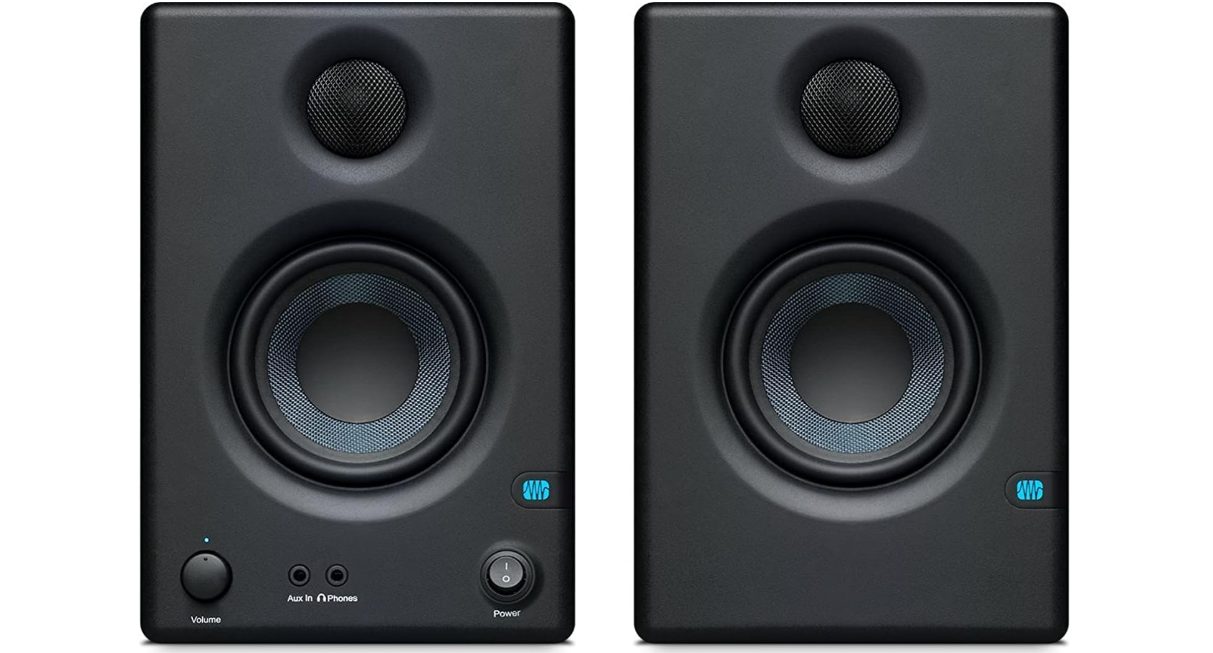
Speakers are to audio what monitors are to video – if they’re not accurate, you’re editing blindfolded. The Presonus Eris E3.5 Studio Monitors cut through the consumer-grade fluff with flat, honest sound reproduction that reveals what your project actually sounds like. Unlike typical computer speakers that artificially boost bass and treble, these monitors tell the truth – sometimes brutally so.
Their 3.5-inch Kevlar woofers and 1-inch silk-dome tweeters reproduce dialogue with remarkable clarity, making them perfect for narrative content. Position them at ear level in an equilateral triangle with your sitting position for optimal results.
They’re like the brutally honest friend who tells you when something doesn’t work – occasionally painful but ultimately making your work better. For editors working in smaller spaces, these cool workspace gadgets provide professional monitoring without requiring a room redesign.
11. Samsung T7 2TB SSD

Video files are data monsters, and feeding them quickly makes the difference between smooth editing and hair-pulling frustration. The Samsung T7 SSD serves as the perfect high-speed pipeline for your hungry editing system. Think of it as an express lane for your footage – no more waiting through the digital traffic jams caused by slower drives.
Connection is simple: plug into any USB-C port and you’re ready to edit with read/write speeds up to 1,050/1,000 MB/s. Create separate folders for current projects, media assets, and exports to keep things organized as your library grows.
The speed benefits aren’t just theoretical – editors report load times reduced compared to traditional drives. When a project wraps, move the files to more affordable long-term storage, keeping your fast T7 ready for the next job. This workflow maximizes both performance and cost-efficiency.
10. MSI B760 Gaming Plus WiFi Motherboard
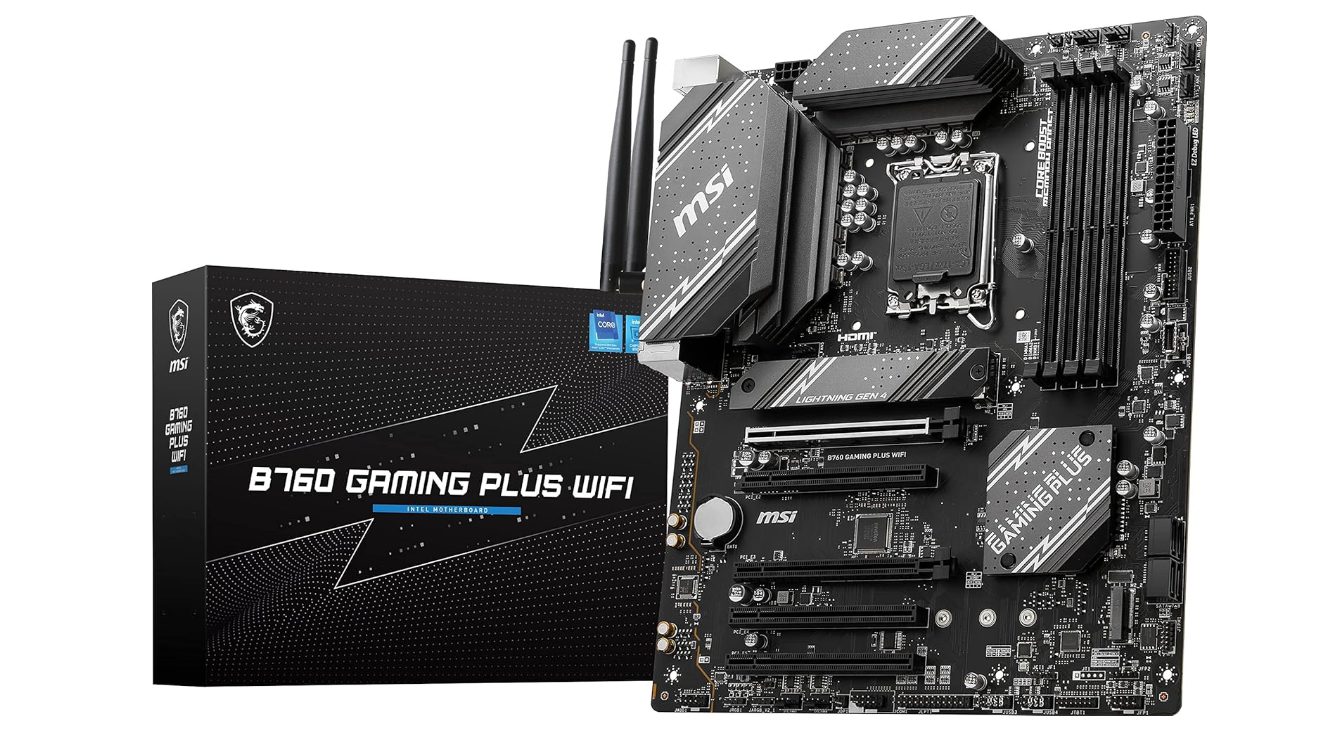
For PC builders (or if you’d rather just skip using a Mac Mini), there’s always the option of building your own rig. The motherboard is the foundation everything else stands on – skimp here and you’ll pay later. The MSI B760 Gaming Plus WiFi hits the value sweet spot at around $160, offering the connectivity modern editing demands without charging for extras you’ll never use. It’s like buying a well-located piece of real estate for your components to live on.
The board supports multiple storage drives, allowing separate SSDs for your system, applications, and project files – a configuration that significantly boosts performance. Built-in WiFi 6 means fast wireless file transfers without running cables across your workspace. USB-C connectivity future-proofs your setup for newer peripherals and drives.
When building your system, update the BIOS immediately to ensure compatibility with the latest processors. This board gives editors room to grow without unnecessary expense.
9. Intel Core i5-12600K Processor
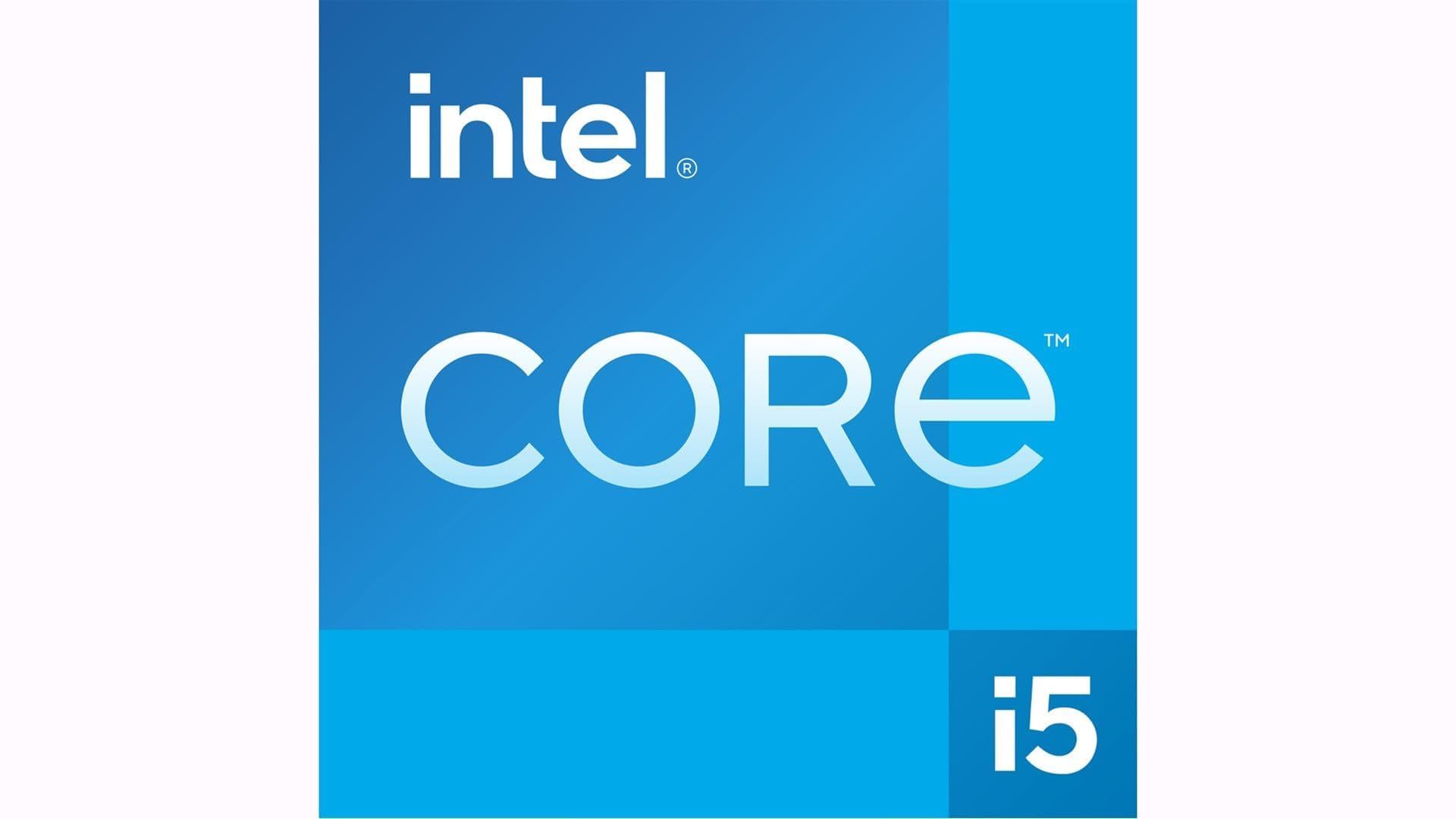
The processor is the brain of your editing system, and the i5-12600K brings serious IQ to the party. With 10 cores (6 performance + 4 efficiency) and 16 threads, this CPU handles everything from timeline scrubbing to effects rendering with impressive speed. It’s like having a small render farm inside a single chip.
Performance jumps are immediately noticeable – what might have been a coffee break during rendering on older CPUs becomes a brief moment with the 12600K. The hybrid architecture intelligently assigns tasks based on their demands, using high-performance cores for intensive rendering and efficient cores for background tasks.
For optimal results, pair with an appropriate cooler to prevent thermal throttling during long renders. This processor reveals how far mid-range performance has come – delivering what used to require a high-end workstation at a fraction of the cost.
8. ID-Cooling SE-214-XT Cooler
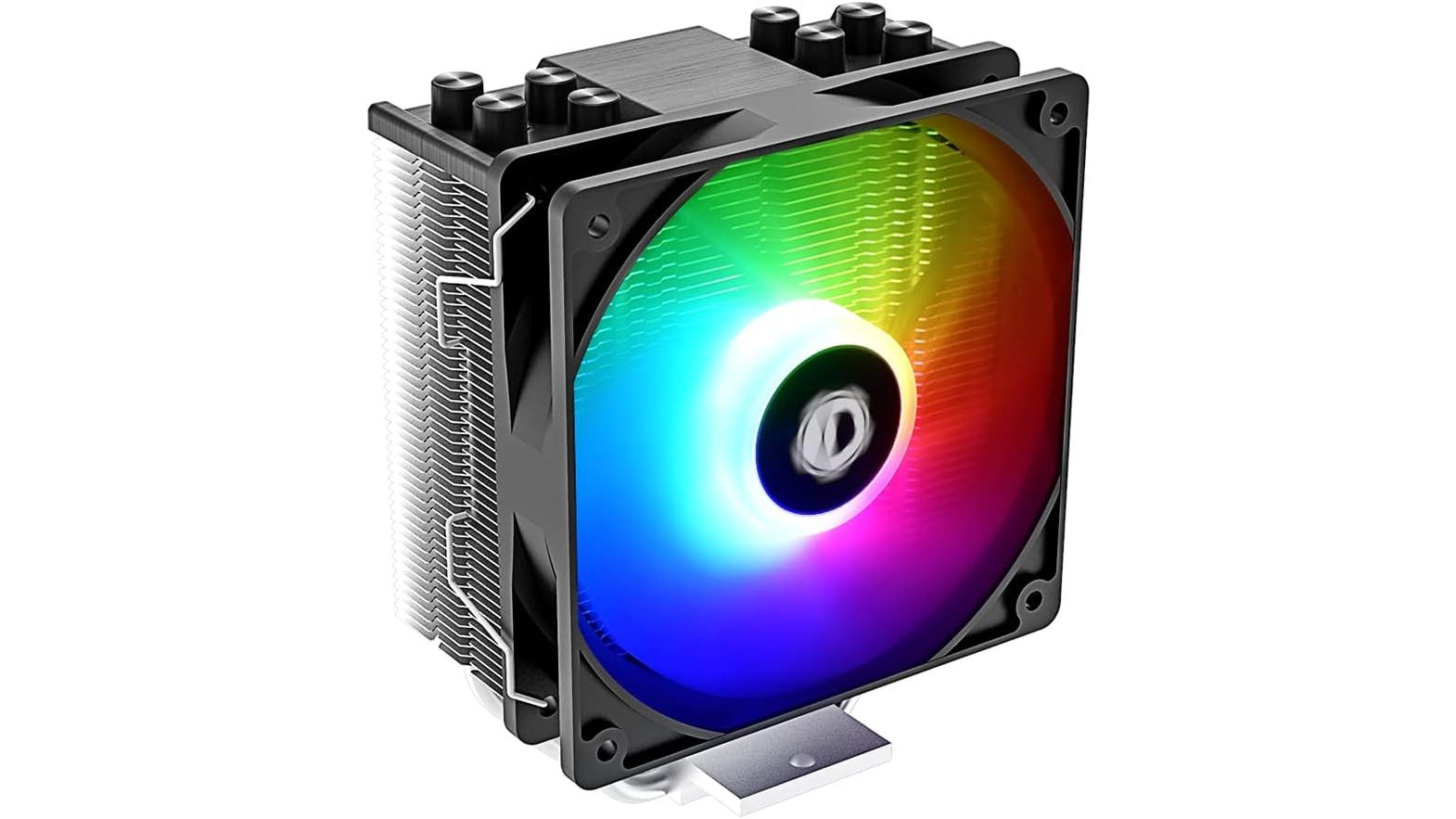
Heat is the silent performance killer in editing systems. When processors run too hot, they automatically slow down – turning your rendering race car into a rendering turtle. The ID-Cooling SE-214-XT tackles this thermal challenge for just $18, making it possibly the best performance-per-dollar upgrade in this entire list.
This straightforward cooling solution keeps your processor running at optimal temperatures through long render sessions without making your workspace sound like an airport runway. Four heat pipes efficiently transfer heat away from your CPU to the aluminum fins where the 120mm fan disperses it.
Installation takes minutes but pays dividends in performance consistency during deadline crunches. Remember to clean it occasionally – dust is the arch-nemesis of cooling efficiency and builds up faster than you might expect.
7. Crucial DDR5 RAM (16GB or 32GB)
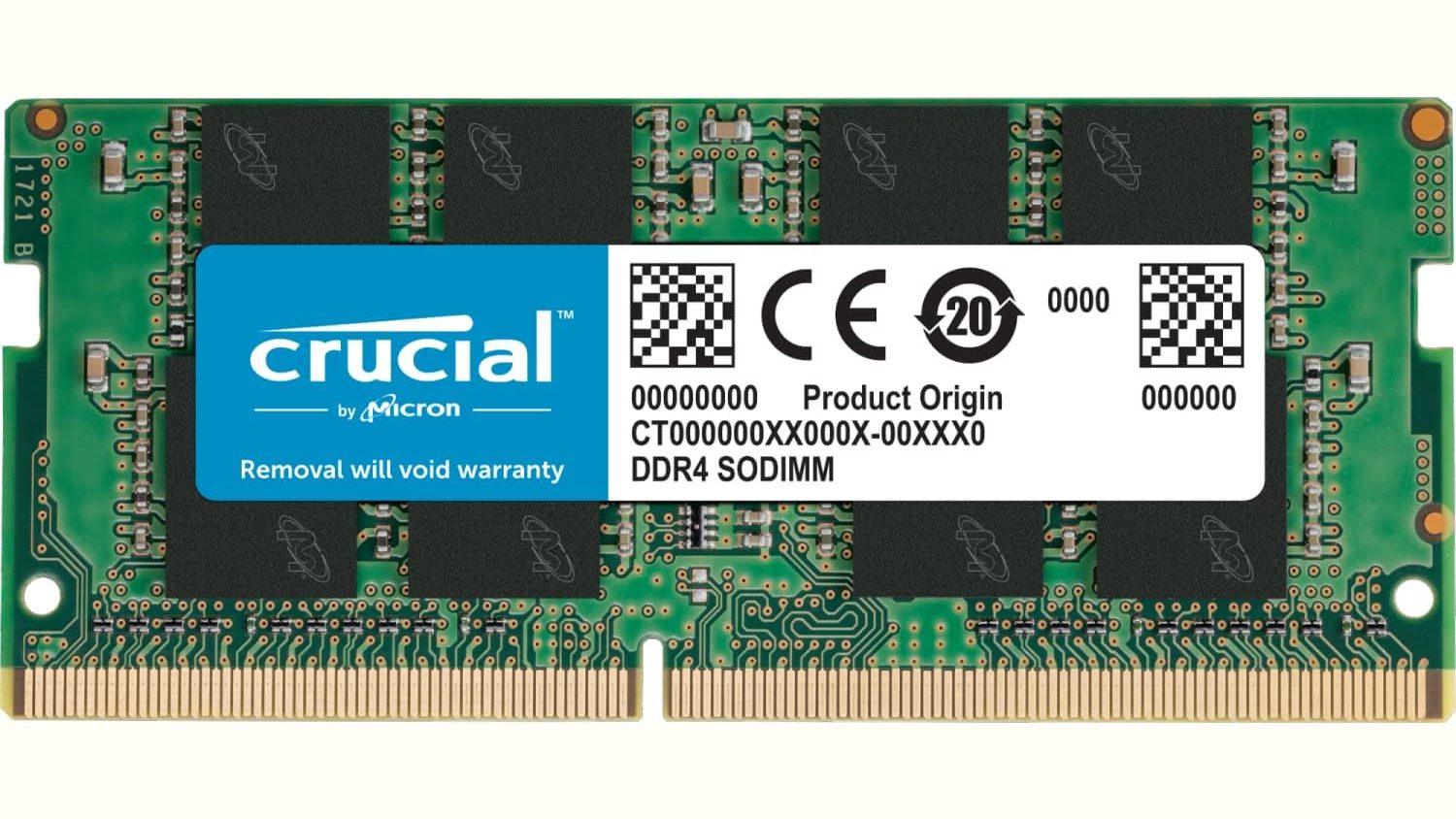
If your processor is the brain of your editing system, RAM is its working memory – and running low feels like editing with a concussion. Crucial DDR5 brings next-gen memory at increasingly reasonable prices, with 16GB kits starting around $55 and 32GB kits at approximately $114. The performance difference compared to previous-generation memory is like upgrading from a dirt road to a highway.
For 1080p editing, 16GB provides adequate headroom, while 4K work strongly benefits from 32GB or more. Install matching RAM sticks in the designated motherboard channels to enable dual-channel performance for better transfer speeds.
When working with multiple applications – perhaps editing in Premiere while After Effects runs in the background – additional RAM prevents the system slowdowns that interrupt creative flow. Few upgrades transform the editing experience as dramatically as sufficient, fast memory.
6. Crucial P3 Plus SSD (500GB or 1TB)
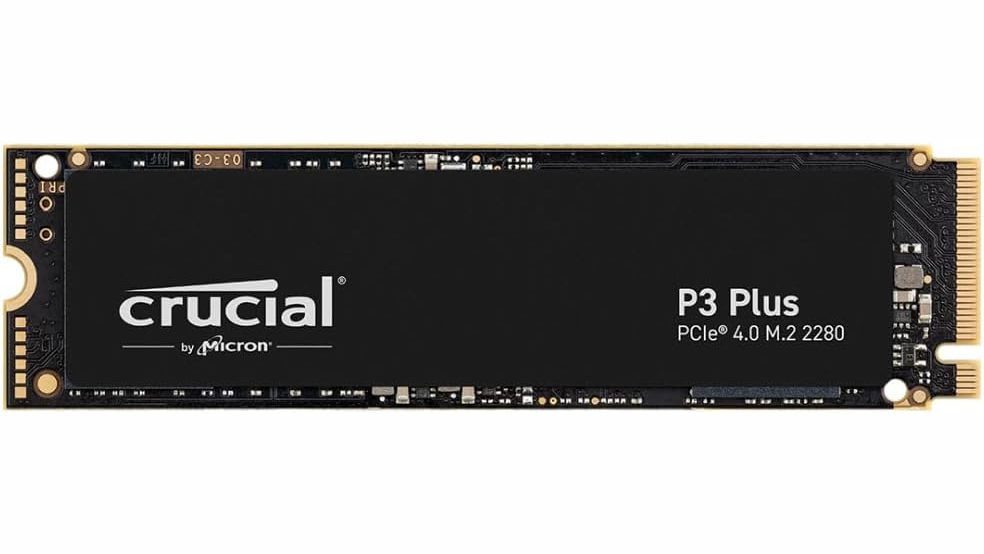
System response time makes or breaks the editing experience. The Crucial P3 Plus NVMe SSD delivers dramatically improved launch speeds for applications and projects compared to traditional drives. It’s like replacing a crowded elevator with a rocket ship for your data.
The 500GB version provides ample space for your operating system and applications, while the 1TB model (often just $12-15 more) adds room for current projects and cache files. Configure your editing software to use this drive for scratch disk and cache storage to maximize timeline scrubbing performance.
Keep at least 20% free space to maintain peak speeds throughout the drive’s life. This seemingly small component transforms the entire system’s responsiveness, eliminating those small daily delays that collectively waste hours of creative time.
5. MSI GeForce RTX 3060 Ventus
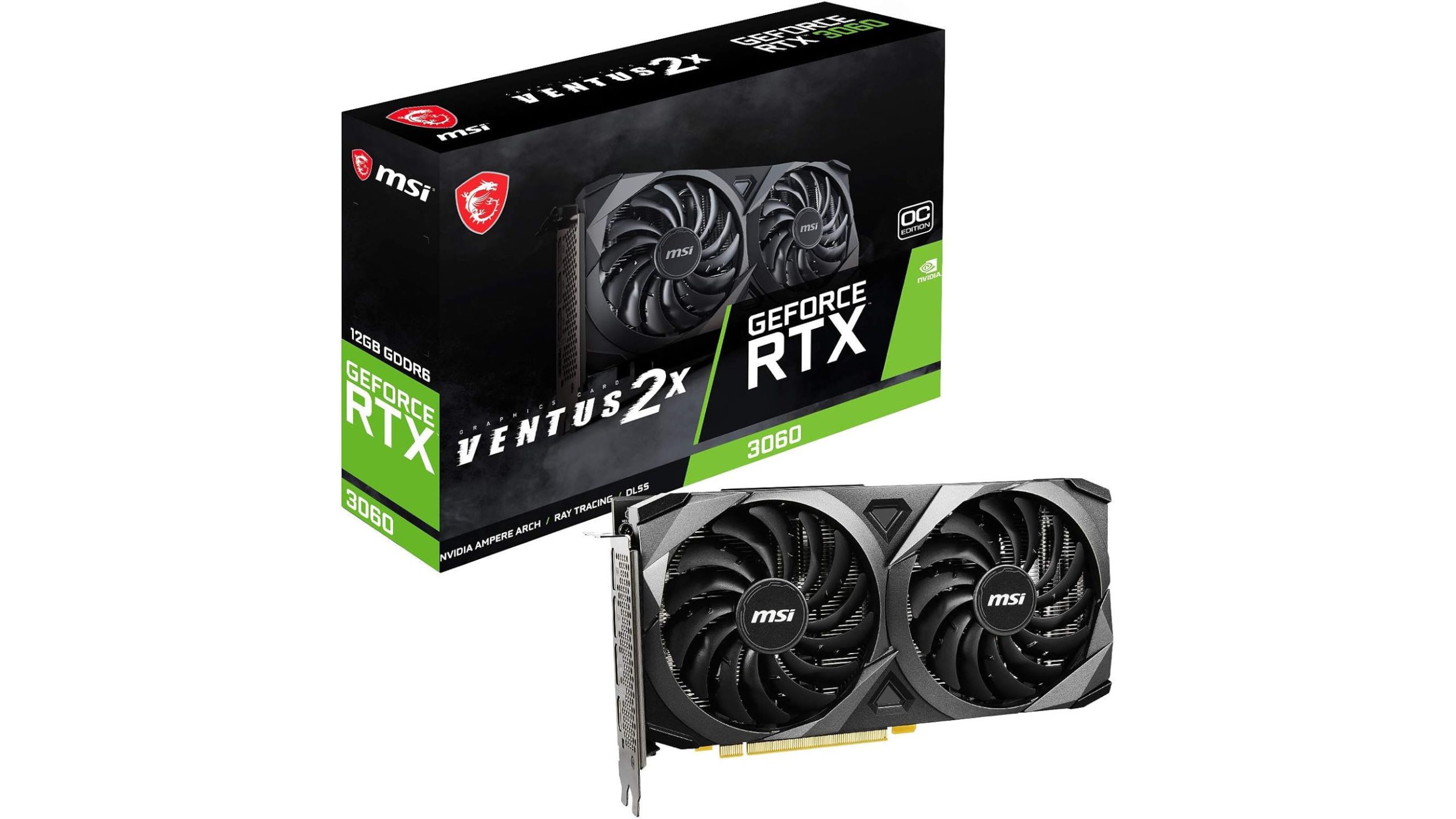
Video encoding and effects processing benefit enormously from dedicated graphics hardware. The MSI GeForce RTX 3060 Ventus brings 12GB of VRAM and hardware acceleration to your editing setup for around $289. For editors using GPU-accelerated effects, it’s like swapping a push lawnmower for a riding mower – the work gets done faster with less effort.
Be sure to install the Studio drivers rather than Gaming drivers for optimal editing performance. The NVENC encoder significantly accelerates exports in compatible software, while CUDA acceleration speeds up effects processing. The card runs cool and quiet thanks to its dual-fan design, preventing thermal throttling during extended rendering sessions.
While newer cards exist, the 3060’s price-to-performance ratio remains competitive for most editing tasks. Its 12GB VRAM buffer handles 4K projects comfortably, making it a solid investment that won’t need immediate replacement.
4. EVGA 650 Power Supply (650 B5 Modular Option)

The power supply rarely gets glory, but choose poorly and your entire system suffers. The EVGA 650 B5 delivers clean, stable power while its modular design eliminates cable clutter. Think of it as your system’s heart – it doesn’t need to be flashy, but it absolutely needs to be reliable.
Install with the fan facing downward in cases with bottom ventilation to draw in cooler air. The 650-watt capacity provides sufficient power for mid-range editing systems with headroom for component upgrades. For mission-critical projects, consider adding an uninterruptible power supply (UPS) to prevent work loss during outages or fluctuations.
The difference between a quality power supply and a budget unit becomes apparent when components last years instead of months. This unglamorous component might not make your editing faster, but it will make your system more reliable when deadlines loom.
3. Corsair 4000D Airflow Case
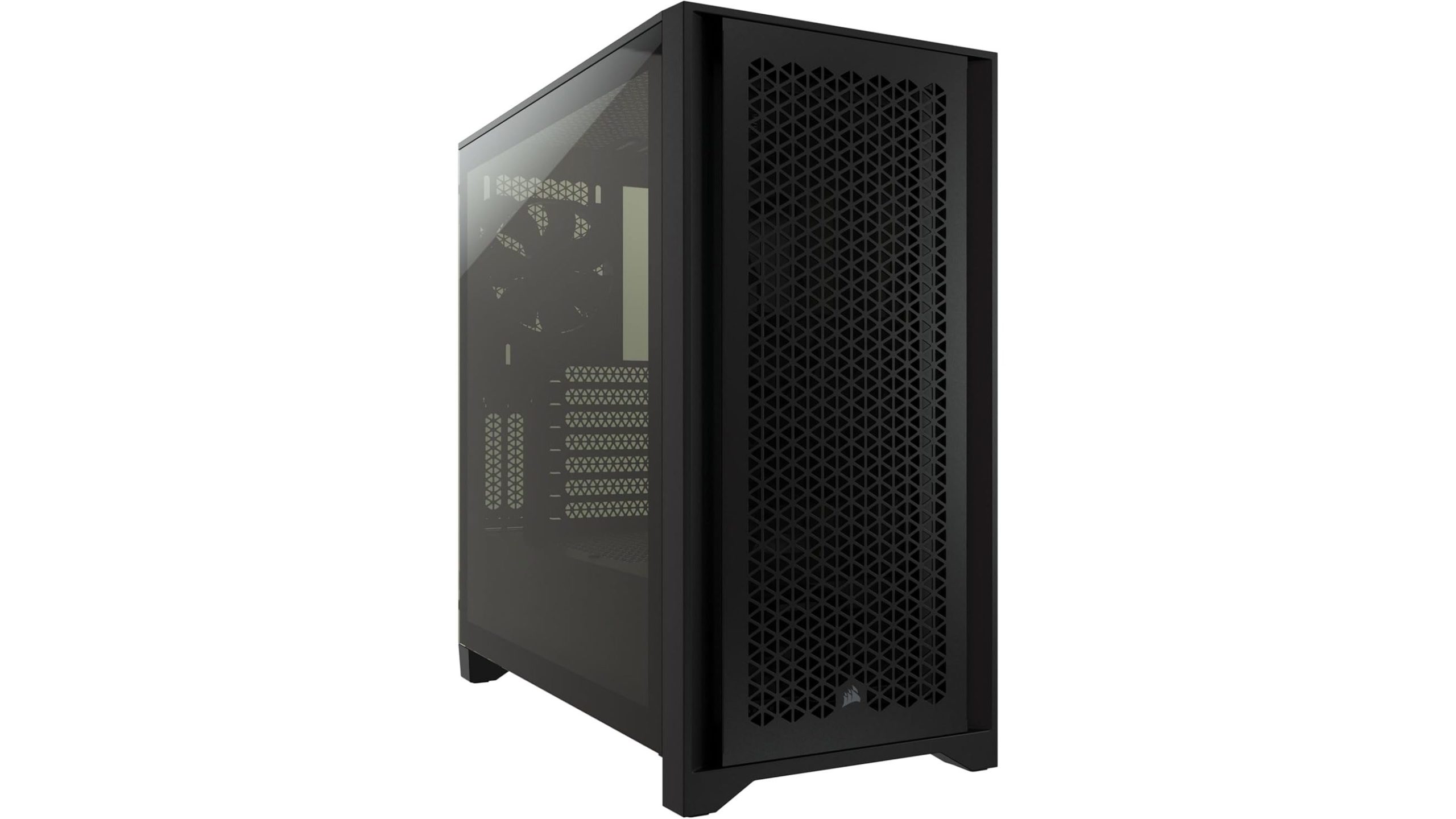
Component cooling doesn’t just happen – it requires thoughtful airflow management. The Corsair 4000D Airflow case creates an optimal environment for your editing hardware with its mesh front panel and intelligent interior design. It’s like giving your components a climate-controlled home rather than a stuffy closet.
The case accommodates full-sized graphics cards and multiple storage drives while maintaining a clean aesthetic suitable for home or professional settings. Its thoughtful cable management system keeps airflow optimal and makes future upgrades simpler.
The mesh front panel requires occasional cleaning to maintain maximum airflow – a small maintenance task that pays dividends in component temperatures and fan noise levels. This case represents the ideal balance of function, form, and affordability for editing builds.
2. Logitech MX Master 3 or 3S Mouse

Editing requires precision, and the MX Master series delivers exactly that. With its ergonomic design and customizable controls, this mouse becomes an extension of your editing instincts rather than just a pointing device. The precision scroll wheel makes frame-accurate timeline navigation feel natural and intuitive.
Program the additional buttons to perform frequent editing tasks like timeline zoom, clip splitting, or tool selection. Create different profiles for various editing applications to maintain workflow consistency across software. The ergonomic shape reduces wrist strain during long sessions, while its wireless design eliminates cable drag when making precise adjustments.
Despite being one of the pricier items on our list, the productivity gains make it worth every penny for serious editors. It’s the difference between driving with precision controls versus trying to steer with your elbows.
1. DaVinci Resolve (Free)
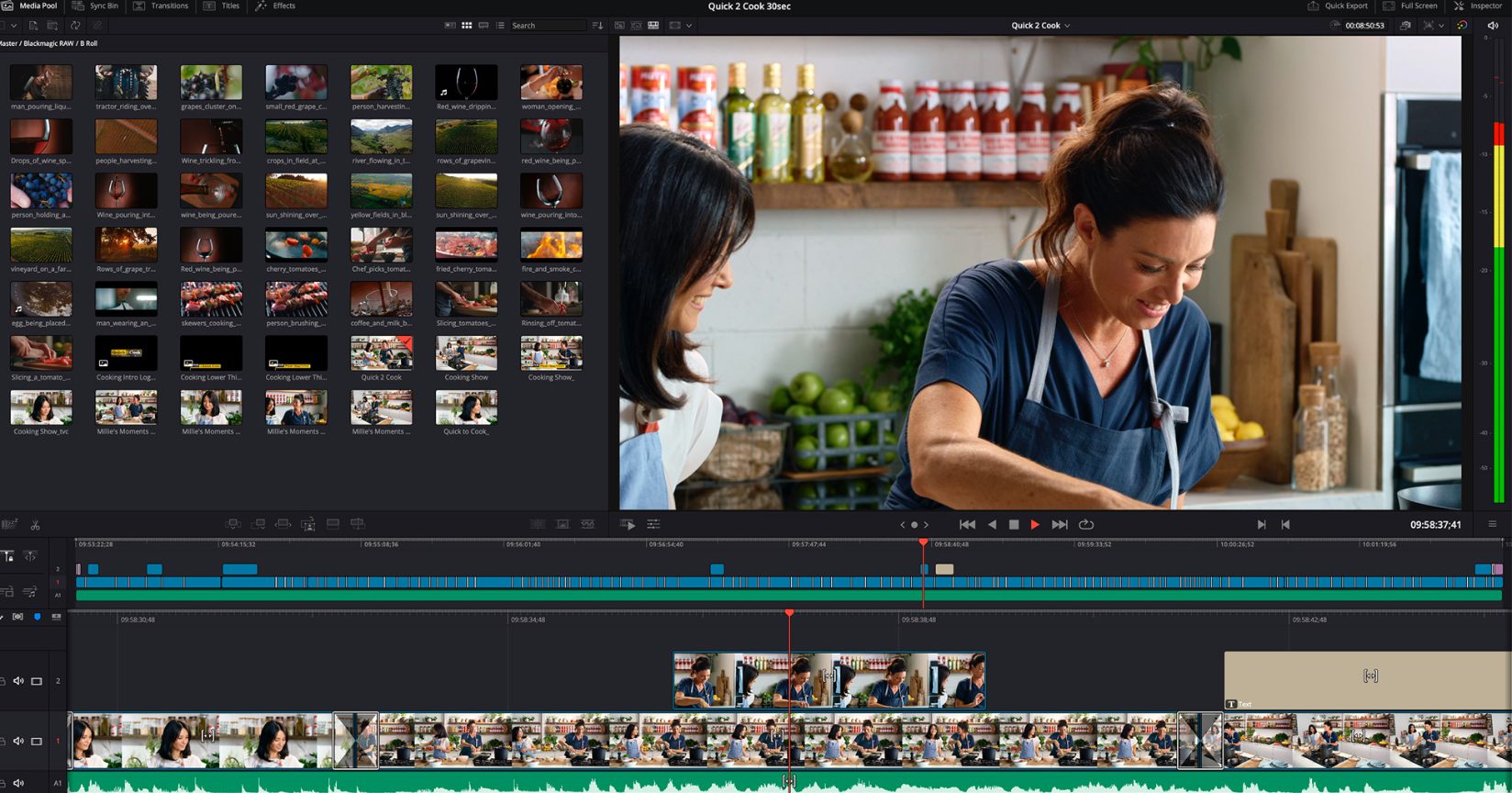
Hardware alone doesn’t make an editor – you need powerful software too. DaVinci Resolve’s free version delivers professional-grade tools without the subscription fees that plague other platforms. Its journey from specialized color grading software to comprehensive editing suite represents one of the most remarkable evolutionary stories in production software.
The learning curve is steeper than some alternatives, but the payoff is enormous. The node-based color correction system enables distinctive visual styles that elevate projects, while the Fairlight audio tools rival dedicated audio applications. New editors should start with the Edit page before exploring the more specialized Color and Fusion workspaces.
The free version handles up to 4K resolution with most features intact – limitations only appear when reaching for the most specialized professional tools. This powerful application eliminates software costs while providing tools that grow with your skills from beginner to professional.

